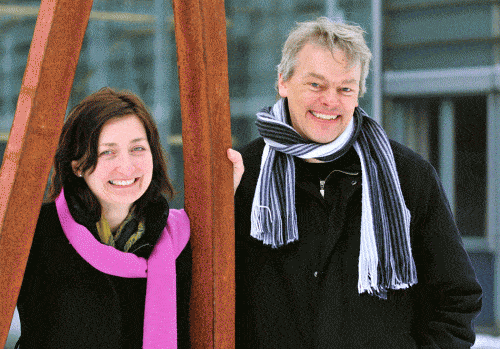The 2014 Nobel Prize in Medicine was awarded half to John O'Keefe of University College London, and half to the couple May-Britt Moser and Edward Moser of Trodenheim University in Norway, "for the discovery of the cells that contain the location system in the brain."

The 2014 Nobel Prize in Medicine was awarded half to John O'Keefe of University College London, and half to the couple May-Britt Moser and Edward Moser of Trodenheim University in Norway, "for the discovery of the cells that contain the location system in the brain."
How do we know who we are? How do we find our way from one place to another? And how do we store this information in such a way that we can immediately find the way the next time we do the same route?
This year's winners discovered the positioning system, the internal GPS in the brain that allows us to orient our way in space, when they discovered the cellular basis responsible for larger cognitive functions.
In 1971, John O'Keefe first discovered the first component of this positioning system. He discovered a type of cells in the hippocampus that were always active when the rat was in a certain place in the room. Other neurons were activated when the rat stayed in other areas. O'Keeffe concluded that these "place cells" created a map of the room.
Over three decades later, in 2005, May-Britt and Edward Moser discovered another key component of the brain's positioning system. They identified another type of nerve cells, which they called the grid cells, which form a positioning and wayfinding system. Their subsequent research showed how the location cells (discovered by O'Keefe) and the grid cells discovered by the Moser couple allow a person to determine their location in order to navigate.
The discoveries of John O'Keefe, May-Britt Moser and Edward Moser solved the problem that has occupied philosophers and scientists for centuries - how the brain creates a map of the space that surrounds us and how we navigate our way in a complex environment.
- Winners:
John O'Keefe was born in 1939 in New York and holds American and British citizenships. He completed his PhD in Physiological Psychology from McGill University in Canada in 1968 and then moved on to a postdoctoral position at University College London where he remained for the remainder of his career and was appointed Professor of Cognitive Neuroscience in 1987. He currently directs the Vallam Sensory Center for Neurocircuitry and Behavior at University College London. - May-Britt Moser was born in Fiusno, Norway in 1963 and studied psychology at the University of Oslo together with her future husband and fellow Nobel laureate Edward Moser. She received her PhD in neuropsychology in 1995 and continued her postdoctoral studies at the University of Edinburgh and then moved to the Norwegian University of Science and Technology Trodenheim in 1996. She was appointed professor of neuroscience in 2000 and is currently the director of the Trodenheim Center for Neural Computation.
- Edvard Moser was born in 1962 in Ol Vend, Norway and received his doctorate in neuropsychology at the University of Oslo in 1995. He did the post together with his wife and fellow Nobel laureate at the University of Edinburgh and was also a visiting scientist in John O'Keefe's laboratory in London. In 1996 they moved to the Norwegian University of Science and Technology in Trodenheim, where Moser became a professor in 1998. He is currently the director of the Kabbalistic Institute for Nervous Systems in Trodenheim.
- https://www.youtube.com/watch?v=PbIzdQp2NzU
The announcement of the prize - the YouTube channel of the Nobel Prize Committee
